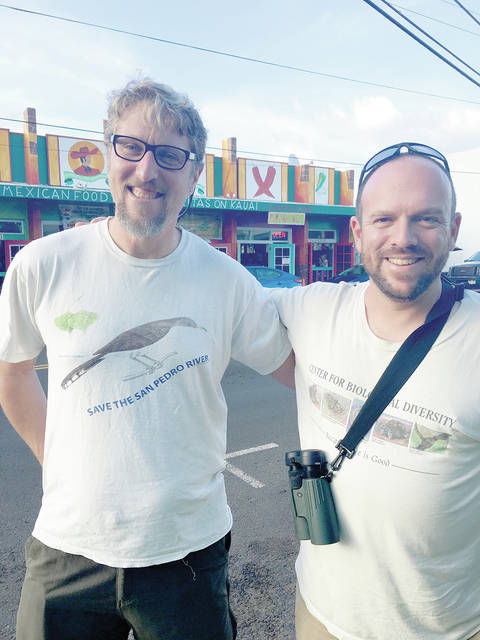LIHUE — Power line collisions kill about 1,800 seabirds annually on Kauai, according to a U.S. Fish and Wildlife Service-commissioned study. Members of the Center for Biological Diversity are on Kauai this week finding ways to help curb the collisions.
LIHUE — Power line collisions kill about 1,800 seabirds annually on Kauai, according to a U.S. Fish and Wildlife Service-commissioned study.
Members of the Center for Biological Diversity are on Kauai this week finding ways to help curb the collisions.
“We knew power line collisions were a threat, but now we’re seeing it’s probably the largest threat numerically for these birds,” said Brett Hartl, government affairs director for the Center for Biological Diversity.
Hartl is here with CBD’s Endangered Species Director Noah Greenwald.
The study was done for the USFWS Pacific Islands Fish and Wildlife Office in February and pointed to lights and power lines as major threats to Kauai’s endangered seabirds.
The new USFWS-directed analysis predicts all seabird colonies on Kauai will disappear by as early as 2050. Threats the seabirds face include invasive species like rats and cats, habitat loss, attraction to artificial lights and power line collision.
“The other threats, like cats and rats, are definitely still a problem, but even if the lights and the predators are eliminated, power lines are killing the birds,” Hartl said.
Kauai Island Utility Cooperative, owner and operator of the island’s power lines, has spent more than $26 million to date on mitigating risks to the island’s endangered seabirds.
“(That) includes working with consultants, community groups, wildlife agencies and government regulators on bird issues,” said Carey Koide, KIUC’s transmission and distribution manager. “KIUC takes this responsibility very seriously.”
The entity is creating its own long-term habitat conservation plan, and an islandwide seabird habitat conservation plan is in the works with the state Department of Transportation and County of Kauai.
Projects to underground power lines are in the works in some of the more high-threat areas directly within migration paths.
Those are just some of the efforts underway to help protect Newell’s shearwaters and Hawaiian petrels, two endangered seabird species that migrate from mountain burrows to the ocean during the night.
Ongoing litigation with the environmental law firm Earthjustice kept state DOT staff members quiet about their facilities’ impacts on birds.
Hartl said he and Greenwald chatted with staff members at the Kauai Endangered Seabird Recovery Project, which is working with KIUC, about the plan on Thursday.
“They (KIUC) know they have a huge problem, and fixing it is crazy expensive,” Hartl said.
Hartl and Greenwald are on island until today, meeting with those involved in seabird recovery, and plan to be back when the KIUC habitat conservation plan is complete.
“We’re looking for ways to help and ultimately save these birds,” Hartl said.


